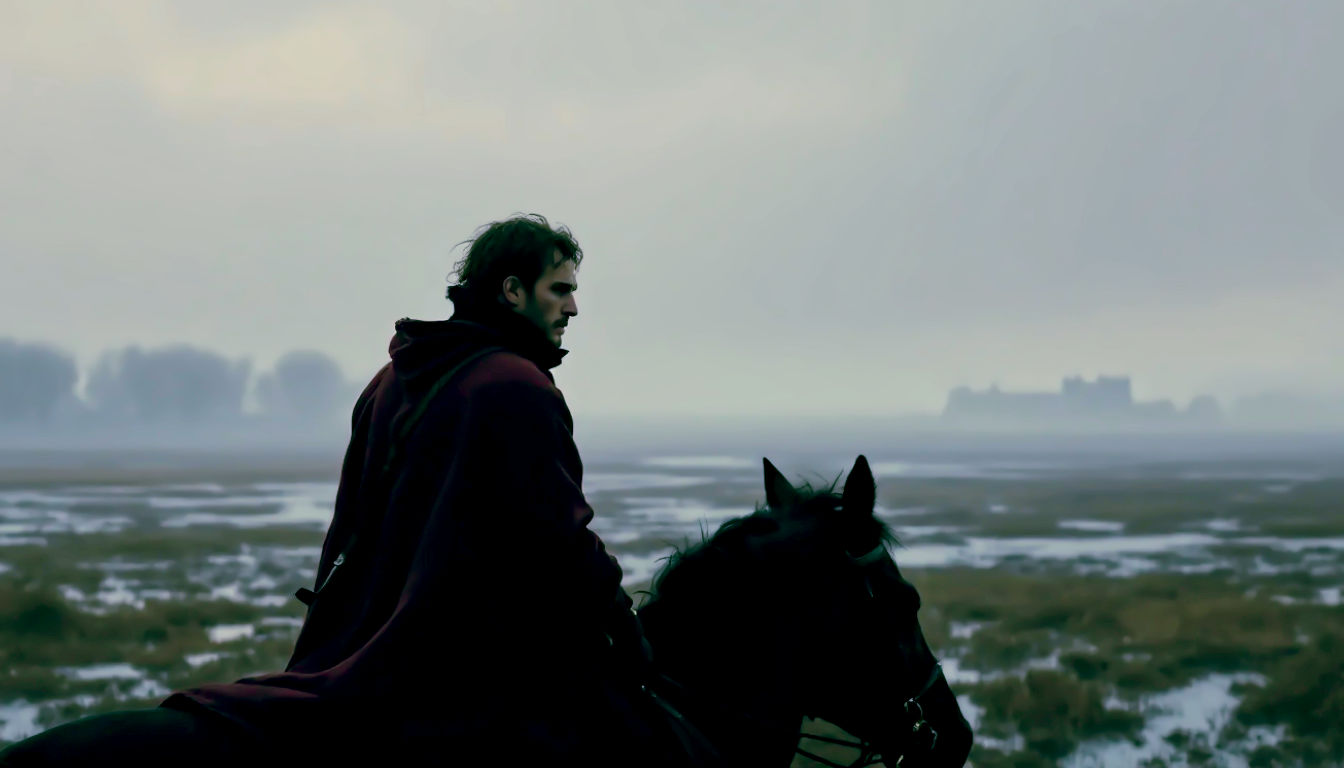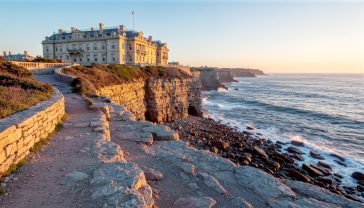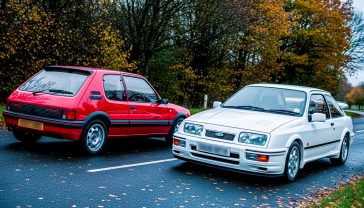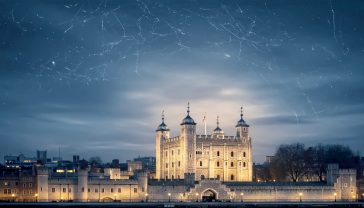The Great Standoff: Why the Decisive 1642 Dutch-Spanish Battle in Flanders Never Happened
In April 1642, the Dutch and Spanish armies prepared for a major battle in Flanders that never came. Discover the definitive story of the strategic standoff that shaped a crucial year in the Eighty Years’ War.

This post may contain affiliate links. If you make a purchase through these links, we may earn a commission at no additional cost to you.
In the damp, chilly spring of April 1642, the fields of Flanders should have echoed with the roar of cannon and the clash of steel. Two of Europe’s most formidable armies were squared off across a landscape of mud, canals, and fortified towns. On one side stood the dogged, determined forces of the Dutch Republic, fighting for their very existence. On the other, the proud, professional soldiers of the Spanish Empire, led by the ambitious new Governor of Flanders, Francisco de Melo. Everything was primed for a historic, bloody confrontation that could change the course of a war that had already raged for generations.
And then… nothing happened.
There was no grand battle in April 1642. No epic clash is recorded in the history books for that month. This wasn’t because of a truce or a peace treaty. It was something far more complex. The story of that quiet month is the story of modern warfare in its infancy—a tale of strategy, logistics, political distraction, and the quiet, grinding reality of a conflict that was more about digging trenches and starving out cities than glorious cavalry charges.
To understand why the great battle never came, we need to zoom out from the muddy fields and look at the bigger picture. This is the story of a war that was less a single, explosive event and more a slow, brutal chess match, where the most important moves were the ones made in silence.
A Century of Struggle: Setting the Scene
To grasp the tension in Flanders, you need to understand two colossal conflicts that had turned Europe into a bloodbath: the Eighty Years’ War and the Thirty Years’ War. They weren’t separate events; they were intertwined, like two particularly nasty pub brawls that merge into one chaotic, building-wrecking mess.
What Was the Eighty Years’ War? (The Dutch Fight for Freedom)
Imagine being ruled by a foreign king who lives hundreds of miles away in a sunnier climate, speaks a different language, and worships in a way you think is wrong. Now, imagine he keeps hiking your taxes to pay for his other wars. That’s roughly the situation the Dutch found themselves in with Spain in the 16th century.
The Low Countries (what we now call the Netherlands, Belgium, and Luxembourg) were part of the vast Spanish Empire. But the northern provinces were fiercely independent, overwhelmingly Protestant (Calvinist), and getting very rich from trade. The Spanish King, Philip II, was a devout Catholic and wanted to stamp out Protestantism and control his wealthy subjects.
In 1568, the Dutch had enough. They revolted. What followed was the Eighty Years’ War, a long, grinding, and incredibly brutal fight for independence. It was a war that defined the Dutch nation. They weren’t just fighting for land; they were fighting for their soul, their faith, and their right to govern themselves. By 1642, the war had been going on for 74 years. Generations of Dutch and Spanish soldiers had been born, fought, and died in this seemingly endless struggle.
The Thirty Years’ War: Europe’s Bloody Bar Fight
As if one massive war wasn’t enough, much of Europe had stumbled into the Thirty Years’ War (1618–1648). It started as a religious conflict in the Holy Roman Empire (a patchwork of states in modern-day Germany) between Catholic and Protestant rulers. But it quickly spiralled out of control, dragging in every major power, including Spain, France, Sweden, and Denmark.
It became a raw power struggle. Rulers used religion as an excuse to grab land and weaken their rivals. The war was devastating, particularly in Germany, where armies of mercenaries plundered the land, causing famine, disease, and the deaths of millions.
For Spain and the Dutch Republic, the Thirty Years’ War was a massive complication. They were now fighting each other as part of a much bigger, continent-wide free-for-all. Alliances shifted, and new enemies emerged. The most important of these new enemies for Spain was France. And France, as we’ll see, is the main reason the fields of Flanders were so quiet in April 1642.
The Men in Charge: A Tale of Two Commanders
An army is only as good as its leader. In the spring of 1642, the two forces in the Low Countries were led by two very different, but equally capable, men.
The ‘Taker of Cities’: Frederick Henry, Prince of Orange
For the Dutch, the man in charge was Frederick Henry. He was the youngest son of the legendary William the Silent, the hero who had kicked off the Dutch Revolt. Now in his late fifties, Frederick Henry was a veteran commander with a fearsome reputation. He wasn’t a flashy general known for daring charges. He was methodical, patient, and a master of the most important type of warfare in the Low Countries: siegecraft.
His nickname was the stedendwinger, or “taker of cities.” He understood that in a flat, waterlogged country, victory wasn’t won in open fields. It was won by capturing the network of fortified cities and forts that controlled the roads, rivers, and canals. He was a master of logistics—of digging trenches, placing cannons, and slowly, systematically strangling a city into submission. His campaigns were slow and expensive, but they were incredibly effective. Over the previous decade, he had steadily pushed the Spanish back, securing the borders of the young Dutch Republic.
The Ambitious Newcomer: Francisco de Melo
Facing him was the new Spanish kid on the block, Don Francisco de Melo. A Portuguese nobleman who had remained loyal to Spain, de Melo had only been appointed Governor of the Spanish Netherlands (which included Flanders) the year before. He was everything Frederick Henry was not: bold, aggressive, and itching for a decisive battle.
De Melo was under immense pressure. The Spanish Empire, once the most powerful in the world, was showing cracks. It was fighting the Dutch in the north, the French in the south, dealing with rebellions in Portugal and Catalonia, and its treasury was constantly running on empty. De Melo needed a big, morale-boosting victory to show that Spain was still a force to be reckoned with. He saw Frederick Henry’s patient strategy as a weakness and believed the Dutch could be crushed in a single, decisive engagement.
Pike, Shot, and Mud: The Reality of 17th-Century Warfare
To understand the standoff, we need to forget Hollywood’s version of historical battles. Warfare in this period was a grim, slow, and dirty business dominated by two things: siege cannons and mud.
The Armies on the Field
The armies facing each other across Flanders were complex machines made of mercenaries from all over Europe.
- The Dutch States Army was one of the most professional forces of its time. The Dutch were rich from global trade, and they invested heavily in their military. Their soldiers were generally well-paid, well-drilled, and well-equipped. They were pioneers of a new style of disciplined, volley-fire tactics with muskets. But their greatest strength was in engineering and artillery, the essential tools for taking cities.
- The Spanish Army of Flanders was legendary. For over a century, its hardened veterans, the tercios, had been the most feared infantry in Europe. They were tough, experienced, and incredibly brave. However, their weakness was money. The Spanish crown was often bankrupt, and pay for the troops was frequently late. This led to simmering resentment and, at times, full-blown mutinies where the soldiers would simply stop fighting until they were paid.
The core of both armies was the relationship between pike and shot. Infantry blocks were made up of musketeers (‘shot’) who would fire devastating volleys, and pikemen carrying 18-foot-long spears (‘pike’) to protect the musketeers from cavalry charges while they reloaded their slow, cumbersome weapons.
A War of Sieges, Not Battles
Why were there so few big, open-field battles? The landscape of the Low Countries was the main reason. It was flat, crisscrossed by rivers and canals, and prone to flooding. This made moving large armies difficult and gave a huge advantage to the defenders.
The entire region was dotted with incredibly sophisticated fortresses. These weren’t the old stone castles of the Middle Ages. They were low-slung, star-shaped structures of earth and brick, designed to deflect cannonballs and create deadly ‘killing zones’ for any attacker. A small garrison in one of these forts could hold up an entire army for months.
As a result, the war became a war of attrition. It was less like a boxing match and more like a brutal, slow-motion game of chess. The goal was to control the board by taking your opponent’s pieces—the forts and cities—one by one. A campaign season might be considered a success if you captured just one or two important towns. This was the game Frederick Henry had mastered.
The Flanders Front: April 1642 – The Eye of the Storm
So, we come to the spring of 1642. The armies were stirring from their winter quarters. The campaign season was about to begin. Scouts were probing enemy lines, and generals were poring over maps, planning their next move. Why, then, the silence?
The Strategic Stalemate
By this point in the war, the front line had largely stabilised into a vast network of fortifications known as the Staats-Spaanse Linies (State-Spanish Lines). It was a formidable defensive system of forts, ramparts, and flooded plains stretching across northern Flanders. Neither side could easily advance without first undertaking a major, costly siege.
In April, both commanders were in the process of gathering their strength. Armies didn’t stay together over winter; it was too difficult to feed them. Soldiers were dispersed in garrisons, and new troops and supplies had to be gathered before a campaign could start. April was a month of preparation. Frederick Henry was slowly assembling his army and the huge artillery train needed for a major siege. De Melo was doing the same, calling in his troops from their winter garrisons. They were like two boxers in their corners, waiting for the opening bell.
Whispers and Skirmishes: What Actually Happened?
This doesn’t mean the front was peaceful. April 1642 would have seen constant, low-level violence.
- Cavalry Raids: Small groups of horsemen, known as ruiters, would have crossed the lines to scout enemy positions, ambush supply wagons, and pillage the countryside for food and fodder. This was a form of economic warfare designed to weaken the enemy’s ability to sustain their army.
- Scouting Parties: Infantry patrols would have probed defences, looking for weaknesses and testing the alertness of enemy garrisons.
- Fortifying Positions: Both sides would have used this time to repair and improve their fortifications, digging new trenches and strengthening earthworks in anticipation of an attack.
These were not battles in the grand sense, but they were a constant, deadly reality for the soldiers and civilians living near the front line. The war was always present, simmering just below the surface.
Melo’s Real Target: The French Distraction
Here we arrive at the crucial reason for the standoff on the Dutch front. While Francisco de Melo kept a wary eye on Frederick Henry, his main attention—and the bulk of his planning—was focused south.
France, under the shrewd leadership of Cardinal Richelieu, had officially declared war on Spain in 1635. The French were actively trying to conquer the southern territories of the Spanish Netherlands. For Spain, the French threat was arguably more dangerous than the Dutch one. Losing Flanders to the Dutch would be a humiliation; losing it to their great rival, France, would be a strategic catastrophe.
In the spring of 1642, a large French army was pushing into Artois. De Melo decided he had to deal with this threat first. He gathered the best troops from the Army of Flanders and marched south to confront the French. This was a huge gamble. It meant leaving the Dutch front dangerously undermanned, trusting that the ageing Frederick Henry would be too slow to take advantage.
The gamble paid off spectacularly. On 26 May 1642, de Melo crushed the French army at the Battle of Honnecourt. It was a massive victory for Spain, one that sent shockwaves across Europe and made de Melo a hero. But it was achieved by effectively turning his back on the Dutch. The great confrontation in Flanders in April was sacrificed for a stunning victory against the French in May.
While the Generals Plotted: Life for the Average Fleming
For the people of Flanders, it didn’t matter if the armies were fighting or just staring at each other. The presence of tens of thousands of soldiers was a disaster. The system for feeding these armies was simple and brutal: take what you need from the local population.
Villages and farms had to provide “contributions” of food, grain, and money to whichever army was closest. Refusal meant having your home burned and your livestock stolen. The constant back-and-forth of raiding parties meant that a village might be forced to pay contributions to the Dutch one week and the Spanish the next.
Trade was crippled. Cities like Bruges and Ghent, once the economic heart of Europe, were cut off from their markets. The war created a permanent state of poverty and uncertainty. For the average Fleming, the quiet of April 1642 wasn’t peace; it was just the terrifying, breath-holding silence before the inevitable storm of the summer campaign.
The British Connection: Watching from Across the Channel
Across the English Channel, Britain was watching events in the Low Countries with anxiety. The conflict had a direct impact on them.
- Trade: The Dutch and the Spanish Netherlands were vital trading partners. The war disrupted the lucrative wool trade and made the Channel a dangerous place for English merchant ships, which were often harassed by Dutch and Spanish privateers.
- Religion and Politics: The struggle mirrored Britain’s own religious tensions. English Protestants naturally sympathised with the Dutch cause, while English Catholics quietly rooted for Spain. The war also served as a training ground. Thousands of English and Scottish soldiers fought as mercenaries in both the Dutch and Spanish armies, gaining experience they would later put to deadly use against each other.
- The Coming Storm at Home: Most importantly, in 1642, Britain was teetering on the brink of its own catastrophe. The political and religious disputes between King Charles I and Parliament were about to explode into the English Civil War, which began in August of that year. The tactics, the weapons, and many of the veteran soldiers from the wars in Europe would soon be seen on the battlefields of England. The standoff in Flanders was a preview of the kind of brutal, grinding warfare that was about to engulf the British Isles.
The Aftermath and the Long Road to Peace
After his victory at Honnecourt, de Melo was the man of the hour. But his success was short-lived. While he was busy fighting the French, Frederick Henry finally got his army moving. The Dutch launched a campaign and, though they failed to take any major cities that year, they inflicted damage and proved that the front could not be ignored. The following year, de Melo would lead his army into France again, only to be utterly annihilated by the French at the legendary Battle of Rocroi (1643), a defeat from which the Army of Flanders never truly recovered.
The war would grind on for six more years. The standoff of April 1642 perfectly illustrates why it lasted so long. It was a war of exhaustion, where both sides were too well-entrenched and the strategic stakes elsewhere were too high to risk everything on one decisive battle.
Finally, in 1648, the conflicts came to an end with the Peace of Westphalia. As part of this grand European settlement, Spain formally recognised the Dutch Republic as a sovereign and independent nation. After eighty long years of struggle, the Dutch had won their freedom.
Conclusion: The Importance of a Quiet Month
The story of April 1642 on the Flanders front is the story of a battle that never was. But its importance lies not in what happened, but in what it reveals about the nature of war. It shows us that history is often shaped by unseen forces: logistics, political priorities, and the lay of the land.
The quiet standoff was a crucial moment of preparation. It was a strategic pause that allowed Francisco de Melo to win a spectacular, but ultimately fleeting, victory against the French. It was a period of gathering strength for Frederick Henry, who continued his slow, methodical campaign to secure his nation’s future.
Most of all, it reminds us that for the soldiers shivering in muddy trenches and the civilians praying for peace, the loudest moments of war are not always the most significant. Sometimes, the most deafening sound is the silence—the tense, fearful quiet before the storm finally breaks.
Further Reading
For those wishing to delve deeper into this complex period, the following resources are highly recommended:
- Geoffrey Parker, The Army of Flanders and the Spanish Road, 1567-1659: The definitive academic work on the Spanish military machine in the Low Countries.
- Jonathan I. Israel, The Dutch Republic: Its Rise, Greatness, and Fall 1477-1806: A comprehensive and authoritative history of the Dutch Republic.
- Peter H. Wilson, The Thirty Years’ War: Europe’s Tragedy: An exhaustive study of the wider conflict that shaped the events in Flanders.
- The Rijksmuseum, Amsterdam: The museum’s collections contain a vast number of paintings and artifacts from the period, offering a visual insight into the Eighty Years’ War.






